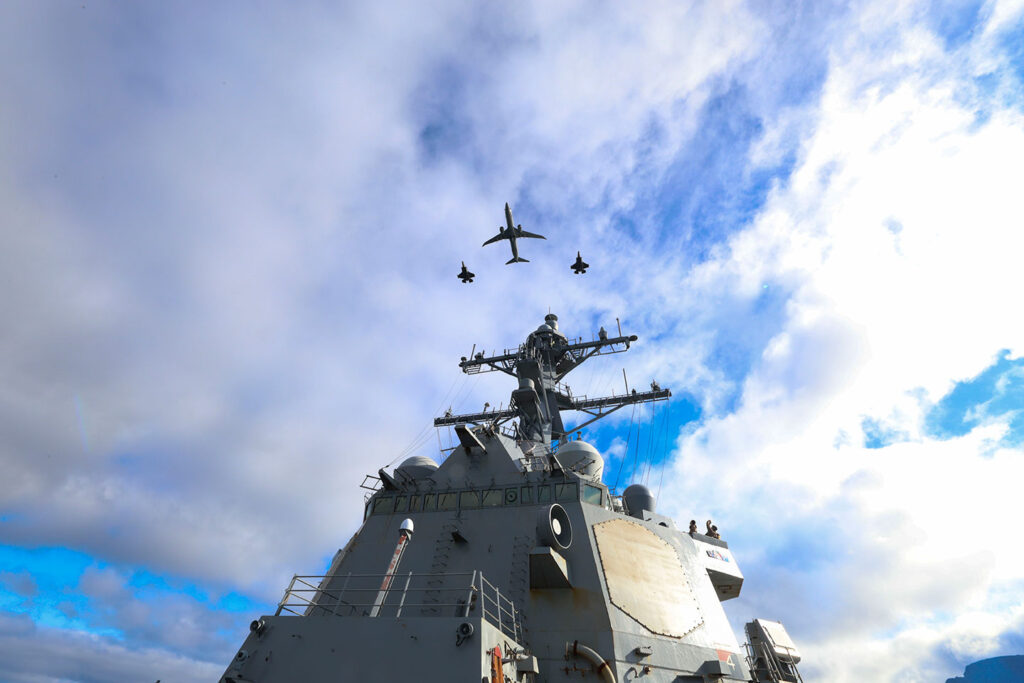The United States has deployed long-range maritime patrol warplanes in northern Europe as tensions between NATO and Russia continued to escalate. U.S. Navy P-8 Poseidons are operating out of Norway, the Norwegian military confirmed in October 2025. The presence of the sophisticated warplane able to refuel midair bolsters NATO’s monitoring and reconnaissance capabilities as drones and warplanes linked to Russia have violated airspaces in Denmark, Estonia and Poland in recent weeks.
The P-8s arrived at Oslo’s Gardermoen Airport in late September, according to the Kyiv Independent, a Ukrainian newspaper. The Norwegian military confirmed the planes’ presence to the media, saying the P-8s were there to support “allied activity” in Norway’s surrounding areas. Notably, Newsweek reported one P-8 flew near the Russian city of Kaliningrad shortly afterward.
Norway isn’t the first NATO ally to welcome a plane also known as the “submarine hunter” in recent months. A U.S. Navy P-8 deployed to Iceland’s Keflavík Air Base took part in NATO’s Baltic Sentry operation in July. The transatlantic alliance launched Baltic Sentry earlier in 2025 after a string of sabotage incidents in the region in 2024, including Russian-linked “shadow fleet” vessels dragging their anchors on the seabed, cutting vital communication and gas lines. Russian aggression in the region increased in 2025 after the U.S. reaffirmed its support for Ukraine’s fight against Russia, which began when Moscow invaded the country in February 2022.
Baltic Sentry began in January with the deployment of maritime and drone assets. Secretary General Mark Rutte said at a NATO summit at the time that the operation demonstrates “by working together with all Allies – we will do what it takes to ensure the safety and security not only of our critical infrastructure but of all that we hold dear.”
Frigates and maritime patrol aircraft and a small fleet of naval drones have been deployed in the Baltic Sea to monitor potential threats. The coordination highlights NATO’s surveillance interoperability with multiple nations lending technologies to increase domain awareness. In addition to the U.S., member nations participating are Denmark, Estonia, Finland, Germany, Latvia, Lithuania, Poland and Sweden.
NATO’s reach in the Baltic region has greatly expanded with the recent additions of Finland and Sweden to the alliance. Both countries joined after Russia’s invasion of Ukraine, prompting some observers to dub the Baltic “NATO’s lake” because it is ringed by members of the alliance. “The changed security environment requires a more proactive response from NATO following recent incidents of damage to undersea communication and energy cables, cyberattacks on major European ports, ‘shadow fleet’ ships from hostile states, coordinated information threats and Russia’s continued full-scale war of aggression against Ukraine,” stated a May news release from NATO. “In response, NATO has adopted a ‘deterrence by denial’ posture, encapsulated by the strategic logic of ‘repel, don’t expel.’ This strategy emphasises the need to proactively deter aggression by stepping up the Alliance’s military presence in the region and underscoring that any attack will be met with a swift and robust response, as opposed to reacting to an attack once it’s too late to thwart.”

